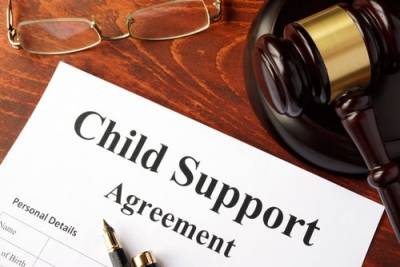Recent Blog Posts
Where Should I Look for Hidden Assets During My Divorce?
 The two areas that cause the most deliberation in divorce cases is child custody arrangements and the division of assets. Going through your finances and properties can cause ugly sides to come out of divorcing couples. Some will claim that certain assets are theirs alone while others will complain that they are not receiving enough in the division process. In Illinois, all marital assets are eligible for equal distribution between both spouses. This can seem unfair to the spouse that is the primary breadwinner of the house or can cause panic for the spouse that relies on these assets to get by after the divorce. These mix of emotions can cause spouses to make illegal attempts to conceal assets.
The two areas that cause the most deliberation in divorce cases is child custody arrangements and the division of assets. Going through your finances and properties can cause ugly sides to come out of divorcing couples. Some will claim that certain assets are theirs alone while others will complain that they are not receiving enough in the division process. In Illinois, all marital assets are eligible for equal distribution between both spouses. This can seem unfair to the spouse that is the primary breadwinner of the house or can cause panic for the spouse that relies on these assets to get by after the divorce. These mix of emotions can cause spouses to make illegal attempts to conceal assets.
Common Hiding Places
Hiding assets is not typically done by putting wads of cash in the cookie jar. There are various common tactics used that can attempt to avoid a paper trail of evidence:
What Is a QDRO and When Would I Need One?
 Getting divorced is stressful on many levels. It is emotional and can be financially burdensome at the time of the divorce and in the future. Young couples filing for divorce are not often thinking about retirement; however, properly preparing for the future should be on the mind of divorcees throughout the proceedings. One of the best ways to secure your future financially is to obtain a qualified domestic relations order (QDRO). This is an order that ensures the recognition of a second party in receiving a portion of the retirement benefits from their former spouse’s plan. While you may believe that you are entitled to your ex’s retirement benefits, the only legal way to secure this money is through a QDRO.
Getting divorced is stressful on many levels. It is emotional and can be financially burdensome at the time of the divorce and in the future. Young couples filing for divorce are not often thinking about retirement; however, properly preparing for the future should be on the mind of divorcees throughout the proceedings. One of the best ways to secure your future financially is to obtain a qualified domestic relations order (QDRO). This is an order that ensures the recognition of a second party in receiving a portion of the retirement benefits from their former spouse’s plan. While you may believe that you are entitled to your ex’s retirement benefits, the only legal way to secure this money is through a QDRO.
Who can receive money through a QDRO?
This legal document has limitations regarding who is considered eligible to receive financial assistance. The recipient is known as the “alternate payee” while the plan holder is known as the “participant”. Alternate payees can include spouses, former spouses, children, or other dependents of the participant.
What Are the Different Types of Separation?
 Separation is typically seen as the step taken before divorce; however, this is not always the case. Some use separation as a trial period to see a life without their spouse in it while others see separation as a substitute for divorce. Many that are considering separation have already experienced a mental or emotional gap without physical distance coming between them and their spouse. There are three types of separation, each of which gets progressively more serious.
Separation is typically seen as the step taken before divorce; however, this is not always the case. Some use separation as a trial period to see a life without their spouse in it while others see separation as a substitute for divorce. Many that are considering separation have already experienced a mental or emotional gap without physical distance coming between them and their spouse. There are three types of separation, each of which gets progressively more serious.
Types of Separation
The following are the three types of separation available to married couples:
-
Trial Separation: A trial separation can be the “trial period” that couples are looking for when they are having difficulties in their marriage. This form of separation does not require any legal paperwork and is not considered a legal process. Trial separation has the two spouses living apart with the potential to get back together. This form of separation often helps couples decide if their marriage is still meant to be or if divorce is on the horizon.
Tips for Raising Children as a Grandparent
 There are various situations in which grandparents take on the parental role for their grandchildren. Sometimes the child’s parents pass away, some are unfit to raise children, while others are simply absent in their children’s lives. While many grandparents will take their grandchildren in as a result of their own child’s neglect or absence, this can be a difficult task for older people to take on. Dreams of travel, spending time with their spouse, or a relaxing retirement can get put on a temporary or permanent hold. Many grandparents willingly adopt their grandchildren but the transition is not always so easy.
There are various situations in which grandparents take on the parental role for their grandchildren. Sometimes the child’s parents pass away, some are unfit to raise children, while others are simply absent in their children’s lives. While many grandparents will take their grandchildren in as a result of their own child’s neglect or absence, this can be a difficult task for older people to take on. Dreams of travel, spending time with their spouse, or a relaxing retirement can get put on a temporary or permanent hold. Many grandparents willingly adopt their grandchildren but the transition is not always so easy.
Tips for Easing the Transition
-
Feelings First: Both you and your grandchildren will feel a mix of emotions about the huge life change. You may be feeling a combination of happy and sad feelings: pleased to be able to provide your grandchild with a loving home but upset that your life plan took an unexpected turn. Your grandchild will most likely be experienced similar sentiments. For children, these feelings can often be displayed through aggressive or inappropriate behavior. Talking to your grandchildren about their feelings is the first step towards creating a sense of normalcy. Looking for grandparent support groups is a good way to get a hold on your feelings without taking them out on your grandchild accidentally.
Why Choose a Mediator for Your Divorce?
Selecting your legal team for your divorce is one of the most important steps that you can take. Without adequate legal assistance, you may not receive proper alimony, child support, or custody when you and your former spouse’s belongings get divvied up. Most couples getting divorced will each select their own attorney who will then work solely in the best interests of the spouse that hired them. Because this is a common choice for many divorces, some couples do not realize that alternative options exist. Divorce mediation has become increasingly popular as modern times have removed the age-old negative stigma that used to surround the idea of divorce.
What Is Divorce Mediation?
Divorce mediation is an alternative to divorce litigation. Divorce mediators are typically a branch of attorneys at a law firm that specializes in both litigation and mediation. A mediator is a neutral third-party that meets with both spouses to make divorce arrangements. Unlike common divorce proceedings, the goal of mediation is to come to an agreement together rather than having two opposing sides pitted against each other.
How Are Child Support Payments Regulated?
 Divorces in which children are involved require legal assistance in a different sense than other divorce cases. Most parents do not come to a custody decision without some disagreements. It is uncommon for both parents to share equal custody of their children. One parent is named the “custodial parent” since the child lives primarily under their roof. The other parent is known as the “non-custodial parent”. The non-custodial parent does not pay for things such as groceries, clothes, or the gas needed to drive the child around every day, they are often required to provide the custodial parent with a set amount of money on a monthly basis in order to compensate for these expenses. These payment amounts are determined by a variety of factors. These include income, bonuses, properties owned, and other forms of financial value owned by both parents. Continue reading to learn how child support payments are regulated based on each individual’s situation.
Divorces in which children are involved require legal assistance in a different sense than other divorce cases. Most parents do not come to a custody decision without some disagreements. It is uncommon for both parents to share equal custody of their children. One parent is named the “custodial parent” since the child lives primarily under their roof. The other parent is known as the “non-custodial parent”. The non-custodial parent does not pay for things such as groceries, clothes, or the gas needed to drive the child around every day, they are often required to provide the custodial parent with a set amount of money on a monthly basis in order to compensate for these expenses. These payment amounts are determined by a variety of factors. These include income, bonuses, properties owned, and other forms of financial value owned by both parents. Continue reading to learn how child support payments are regulated based on each individual’s situation.
How Does My Court Conduct Affect My Divorce?
 The way one looks and acts is crucial throughout the entire divorce process. Not all divorces go so far as a court appearance. Amicable divorces are typically done behind closed doors, with the assistance of attorneys. This is common for those who mutually decide that divorce is right for them and are able to settle the different facets of divorce without a judge’s third-party assistance. Conduct is especially important in cases involving children. If a judge notices that one parent is acting in a way that is unfit for a parent, custody decisions will be affected. Whether or not you are in front of a court or in a private space, your conduct is crucial for getting a “fair trial”.
The way one looks and acts is crucial throughout the entire divorce process. Not all divorces go so far as a court appearance. Amicable divorces are typically done behind closed doors, with the assistance of attorneys. This is common for those who mutually decide that divorce is right for them and are able to settle the different facets of divorce without a judge’s third-party assistance. Conduct is especially important in cases involving children. If a judge notices that one parent is acting in a way that is unfit for a parent, custody decisions will be affected. Whether or not you are in front of a court or in a private space, your conduct is crucial for getting a “fair trial”.
How Should I Behave During the Divorce Process?
-
Timeliness is everything: Arriving on time to every legal appointment is key. This is the only concrete evidence that a judge can see that shows reliability and responsibility. This also tells the court that you see this as a priority. Each spouse is compared throughout the legal process so it is important to be on time.
How Will Divorce Affect My Taxes?
 Marriage is known to be one of the few opportunities to reduce your tax payments. Once married, spouses can file a joint tax return. This obviously changes once the divorce papers are signed and complete. Because your incomes are no longer considered tied, they cannot be filed together whether or not you have children together. For some couples, this makes little difference to them. While for others, the money from a tax return can help keep them afloat. Some couples go so far as staying separated to keep this financial benefit. This is typically not an idea that is suggested by an attorney since tax returns can be unpredictable. Couples that are in the divorce process but have not finalized it yet can still file their taxes together until the year that they are officially divorced. Most people do not consider the effect that divorce will have on their taxes until they have to file for their taxes for the first time post-divorce. Continue reading to learn about the different areas of your tax return that will need to be adjusted after your divorce papers get signed.
Marriage is known to be one of the few opportunities to reduce your tax payments. Once married, spouses can file a joint tax return. This obviously changes once the divorce papers are signed and complete. Because your incomes are no longer considered tied, they cannot be filed together whether or not you have children together. For some couples, this makes little difference to them. While for others, the money from a tax return can help keep them afloat. Some couples go so far as staying separated to keep this financial benefit. This is typically not an idea that is suggested by an attorney since tax returns can be unpredictable. Couples that are in the divorce process but have not finalized it yet can still file their taxes together until the year that they are officially divorced. Most people do not consider the effect that divorce will have on their taxes until they have to file for their taxes for the first time post-divorce. Continue reading to learn about the different areas of your tax return that will need to be adjusted after your divorce papers get signed.
Joint Debt and Divorce
 Most couples have some form of debt that they have incurred over the years, especially if they have been together for a long period of time. You buy expensive things, put it on the credit card, and worry about it when the bill comes in. This usually only becomes an issue if the couple cannot find the means to pay off the debt when it is due or if the couple decides they are filing for divorce. Continue reading to learn what to do if you are filing for divorce and have incurred a significant amount of debt throughout your marriage.
Most couples have some form of debt that they have incurred over the years, especially if they have been together for a long period of time. You buy expensive things, put it on the credit card, and worry about it when the bill comes in. This usually only becomes an issue if the couple cannot find the means to pay off the debt when it is due or if the couple decides they are filing for divorce. Continue reading to learn what to do if you are filing for divorce and have incurred a significant amount of debt throughout your marriage.
Dividing Debt when Going Through Divorce
Most married couples sign credit cards and make large purchases together. While this is convenient throughout the marriage, it also makes it much easier to incur debt jointly. “Joint debt” does not necessarily mean that all of the purchases were made together, it just means that they were made on a joint account. This is important to note if you are considering getting a divorce. In the eyes of the bank and court, all purchases made on joint accounts are liable by both parties. Banks do not change their policies based on a couple’s marital status, thus they can and will come after you if your spouse is not paying off the debt and vice versa.
Establishing Paternity: The Why and How
 For married couples, "proving paternity" is not much of a process and more of an assumption. For those who are not married, proving paternity can be a difficult legal situation. Some fathers do not want to be tied to their child to avoid parental and financial responsibilities. On the other hand, some mothers do not want their child’s father in their life and will avoid telling the biological father that the child is theirs. Regardless of the situation, proving paternity is important for multiple reasons. Not only should the child know for their own peace of mind, but there are also legal and health benefits. Legally, a child will receive financial support payments as well as social security or veterans’ benefits. A child should also know their father in order to know his medical history. Without this knowledge, it can be easy for a child to contract illnesses that could easily be avoided if they had both parents’ medical history.
For married couples, "proving paternity" is not much of a process and more of an assumption. For those who are not married, proving paternity can be a difficult legal situation. Some fathers do not want to be tied to their child to avoid parental and financial responsibilities. On the other hand, some mothers do not want their child’s father in their life and will avoid telling the biological father that the child is theirs. Regardless of the situation, proving paternity is important for multiple reasons. Not only should the child know for their own peace of mind, but there are also legal and health benefits. Legally, a child will receive financial support payments as well as social security or veterans’ benefits. A child should also know their father in order to know his medical history. Without this knowledge, it can be easy for a child to contract illnesses that could easily be avoided if they had both parents’ medical history.

 630-584-5550
630-584-5550







 630-584-5550
630-584-5550